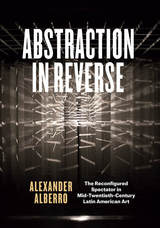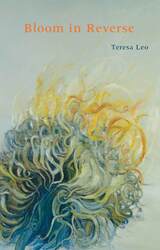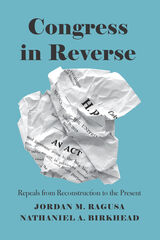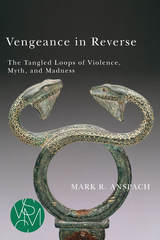5 books about Reverse

Abstraction in Reverse
The Reconfigured Spectator in Mid-Twentieth-Century Latin American Art
Alexander Alberro
University of Chicago Press, 2017
During the mid-twentieth century, Latin American artists working in several different cities radically altered the nature of modern art. Reimagining the relationship of art to its public, these artists granted the spectator an unprecedented role in the realization of the artwork. The first book to explore this phenomenon on an international scale, Abstraction in Reverse traces the movement as it evolved across South America and parts of Europe.
Alexander Alberro demonstrates that artists such as Tomás Maldonado, Jesús Soto, Julio Le Parc, and Lygia Clark, in breaking with the core tenets of the form of abstract art known as Concrete art, redefined the role of both the artist and the spectator. Instead of manufacturing autonomous art, these artists produced artworks that required the presence of the spectator to be complete. Alberro also shows the various ways these artists strategically demoted regionalism in favor of a new modernist voice that transcended the traditions of the nation-state and contributed to a nascent globalization of the art world.
Alexander Alberro demonstrates that artists such as Tomás Maldonado, Jesús Soto, Julio Le Parc, and Lygia Clark, in breaking with the core tenets of the form of abstract art known as Concrete art, redefined the role of both the artist and the spectator. Instead of manufacturing autonomous art, these artists produced artworks that required the presence of the spectator to be complete. Alberro also shows the various ways these artists strategically demoted regionalism in favor of a new modernist voice that transcended the traditions of the nation-state and contributed to a nascent globalization of the art world.
[more]

Bloom in Reverse
Teresa Leo
University of Pittsburgh Press, 2014
Bloom in Reverse chronicles the aftermath of a friend's suicide and the end of a turbulent relationship, working through devastation and loss while on a search for solace that spans from local bars to online dating and beyond to ultimately find true connection and sustaining love. Things move backwards, from death to life, like a reverse time-lapse video of a dead flower morphing from brittle, scorched entity to floral glory to nacsent bud. The poems seek to find those places where the natural world connects to and informs experiences at the core of human relationships, and at times call upon principles and theories from physics and mathematics to describe the complexities of love and loss. It's a book where grief, melancholy, heartbreak, and disillusionment intersect with urban romanticism, hope, possibility, and love. Bloom is all of it, the terrible and the beautiful.
[more]

A Carpetbagger in Reverse
Arthur W. Mitchell, America's First Black Democratic Congressman
John Morris Knapp
University of Alabama Press, 2025
A long overdue account of the pioneering life and work of controversial African American Congressman Arthur Wergs Mitchell of Chicago
[more]

Congress in Reverse
Repeals from Reconstruction to the Present
Jordan M. Ragusa and Nathaniel A. Birkhead
University of Chicago Press, 2020
After years of divided government, countless Republicans campaigned on a promise to repeal the Affordable Care Act, better known as Obamacare. Yet when they took control of both chambers of Congress and the White House in 2017—after six years that included more than fifty symbolic votes and innumerable pledges—they failed to repeal the bulk of the law. Pundits were shocked, and observers and political scientists alike were stuck looking for an explanation. What made Obamacare so hard to repeal? And in a larger sense: What explains why some laws are repealed, and yet others endure in spite of considerable efforts? Are repeals different from law-making or do they mirror one another? Why are repeals more likely at some times than others? What theories of legislative behavior and policymaking explain when repeals happen?
Congress in Reverse is the first book to attempt to answer these questions. Jordan M. Ragusa and Nathaniel A. Birkhead examine when and why existing statutes are successfully “undone,” arguing that repeals are most common when the parties are united on the issue—which was not the case when it came to Obamacare for the Republican Party—and the majority party wins control of Congress after a long stint in the minority. By shifting focus from the making of laws to their un-making, Congress in Reverse opens up a new arena for studying legislative activity in Congress.
Congress in Reverse is the first book to attempt to answer these questions. Jordan M. Ragusa and Nathaniel A. Birkhead examine when and why existing statutes are successfully “undone,” arguing that repeals are most common when the parties are united on the issue—which was not the case when it came to Obamacare for the Republican Party—and the majority party wins control of Congress after a long stint in the minority. By shifting focus from the making of laws to their un-making, Congress in Reverse opens up a new arena for studying legislative activity in Congress.
[more]

Vengeance in Reverse
The Tangled Loops of Violence, Myth, and Madness
Mark R. Anspach
Michigan State University Press, 2017
How do humans stop fighting? Where do the gods of myth come from? What does it mean to go mad? Mark R. Anspach tackles these and other conundrums as he draws on ethnography, literature, psychotherapy, and the theory of René Girard to explore some of the fundamental mechanisms of human interaction. Likening gift exchange to vengeance in reverse, the first part of the book outlines a fresh approach to reciprocity, while the second part traces the emergence of transcendence in collective myths and individual delusions. From the peacemaking rituals of prestate societies to the paradoxical structure of consciousness, Anspach takes the reader on an intellectual journey that begins with the problem of how to deceive violence and ends with the riddle of how one can deceive oneself.
[more]
READERS
Browse our collection.
PUBLISHERS
See BiblioVault's publisher services.
STUDENT SERVICES
Files for college accessibility offices.
UChicago Accessibility Resources
home | accessibility | search | about | contact us
BiblioVault ® 2001 - 2024
The University of Chicago Press









